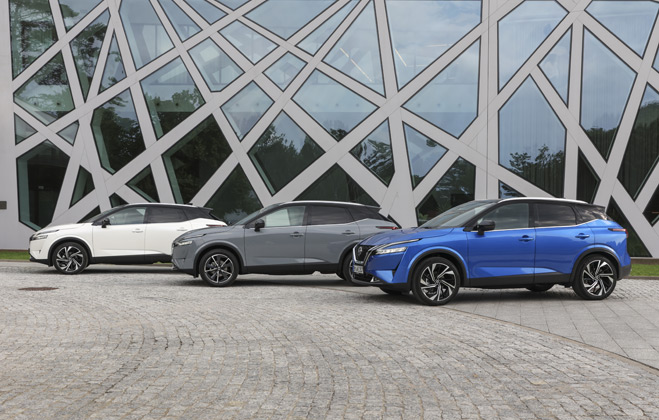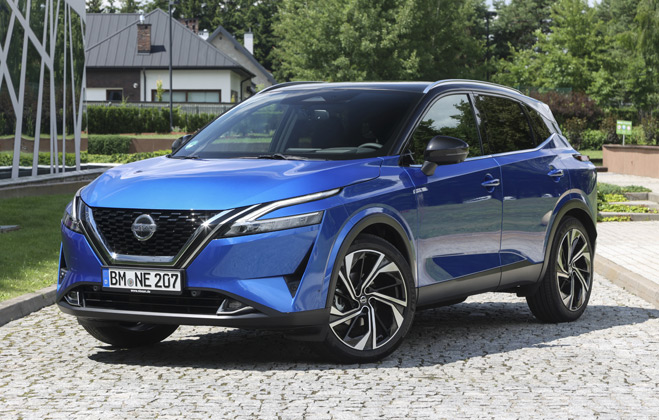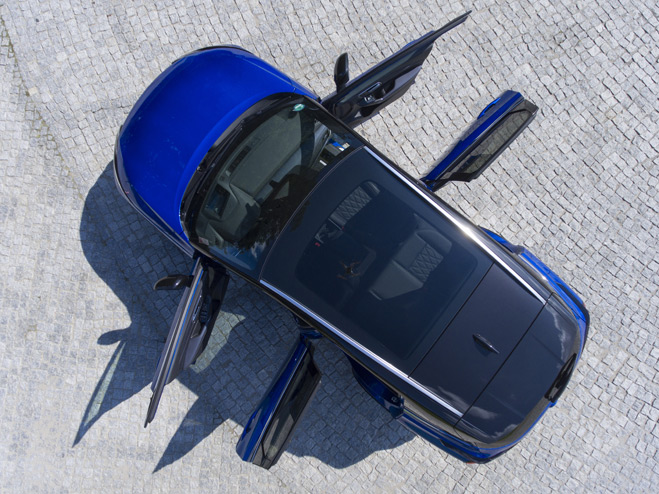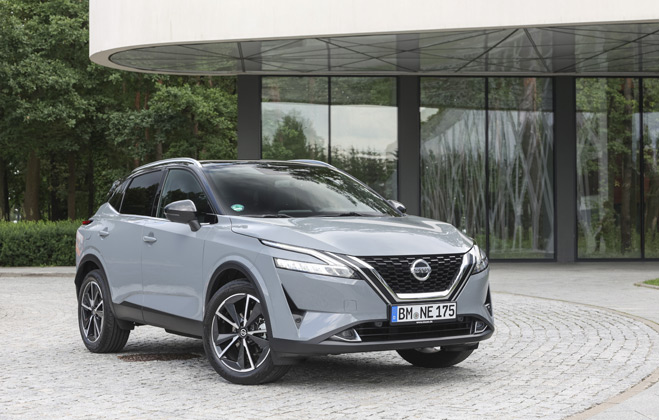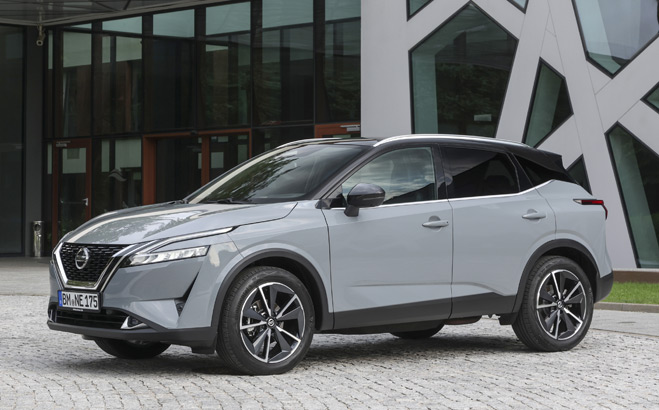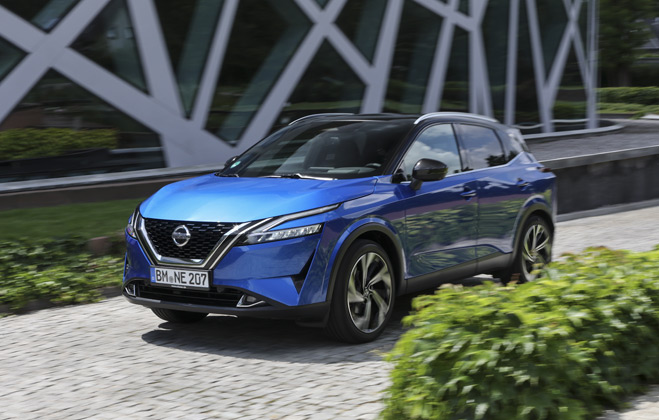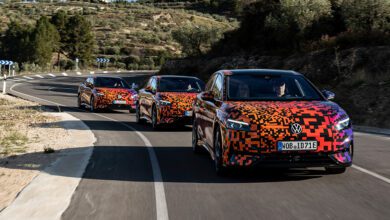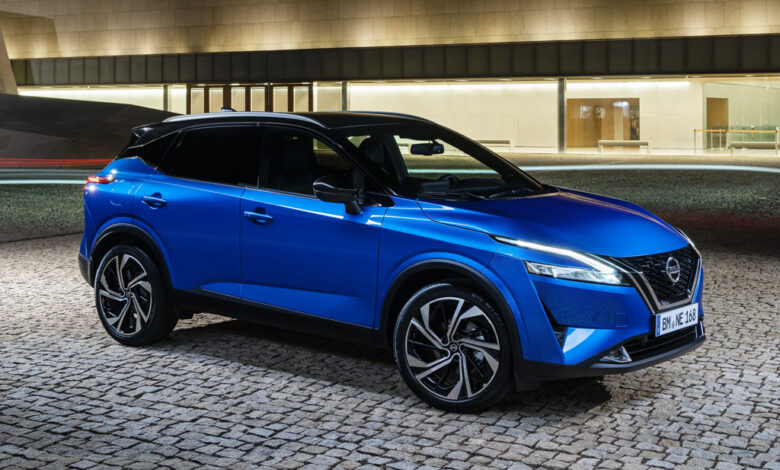
New Nissan Qashqai: even more driving pleasure
The new Nissan Qashqai is based on the new CMF-C platform, enabling Nissan designers, designers and engineers to create a vehicle that meets the high expectations of customers in terms of design, roominess, driving dynamics and carbon emissions.
New Nissan Qashqai.
The CMF-C floorboard is a completely new design, designed and developed to ensure the competitiveness of vehicles based on it, while providing the driving comfort and handling that customers expect in the context of significant advances in the automotive industry.
More rigid body
One of the biggest improvements in terms of driving behavior is the overall increase in body rigidity - by 48% over the previous model. With a stiffer floor, Nissan engineers were able to fine-tune the characteristics of the suspension springs and shock absorbers, knowing that they would now only respond to road roughness and not to movement due to reduced platform stiffness. This will improve steering precision, reduce reaction time and reduce vibration.
Despite the overall increase in rigidity, the body is over 60 kg lighter, contributing to the overall improvement in the new model's fuel economy while reducing the vehicle's inertial forces while driving, so drivers will experience an improvement in their agility.
The rear suspension is available in two versions. The torsion beam suspension is for the 4WD version with 19" or smaller wheels. The torsion beam has been updated from the outgoing model with a new upper damping element, increasing the body's point stiffness and reducing the transmission of vibrations to the cabin. An improved bumper has also been added to improve the smoothness of the rear suspension in extreme positions and to protect against impacts.
To maximize the effectiveness of the shock absorbers, they have been moved more vertically, which reduces their internal friction and thus optimizes performance, providing better damping of uneven ground forces, a smoother ride and improved vehicle roll control.
Customers who order Nissan Qashqai with 20-inch wheels or all-wheel drive will enjoy best-in-class stability and comfort thanks to the multi-link rear suspension. It provides optimal convergence of wheels with the road surface when changing direction, in particular camber, which is most noticeable on roads with poor quality and uneven surfaces. Thanks to the well-controlled body lean, the feeling of better contact with the road, even when cornering, is achieved without sacrificing comfort, and the suspension immediately returns the car to a state of equilibrium after hitting bumps. In both versions of the suspension, isolation from chassis noise and vibration remains one of the best features of the Qashqai. Its advancement in this respect can be compared with higher class cars.
The steering system configuration has been changed.
Drivers of the previous generation Nissan Qashqai will immediately notice positive changes in the steering system, where straight-line stability is now felt and more pronounced. This is due to the fact that the power steering motor moves in close proximity to the tie rod. This reduced the feeling of friction on the steering wheel while producing a more natural increase in the force required to turn the steering wheel as the steering angle increases.
The steering ratio has been changed from 19.1:1 to 14.7:1, resulting in a faster response when entering a turn. The improved steering system, combined with a firmer suspension, allows drivers to immediately notice improved agility and greater driving pleasure. The turning radius is 11.5 m, unchanged from the previous generation of the model.
Another benefit of the new floor plate is the ability to fit 20-inch wheels without changing the front wheel steer range and without sacrificing ease of entry and exit through the tailgate.
Two innovative electrified drive systems
The Qashqai will be offered with two different transmissions. The first is based on a 1.3-liter mild-hybrid petrol engine, available in two outputs.
The 12V ALiS (Advanced Lithium Ion Battery System) 12V mild hybrid system available on the new Qashqai is a more affordable hybrid technology that combines start assist, extended throttle off time, quick restart and idle shutdown ( Xtronic only), resulting in improved fuel consumption and CO2 emissions (-4 g/km). ALiS increases the vehicle's curb weight by just 22 kg.
During braking, the energy stored in the lithium-ion battery is restored. The stored energy is then fed into the system during short stops with the engine off (idle stop), slow deceleration stops of the engine (coast to stop; Xtronic versions only), and during acceleration (torque assist).
When decelerating and at a speed of less than 18 km / h with light braking, the engine turns off, and the stored energy is used to power the vehicle's electrical equipment. This allows you to increase the time the engine is stopped, which leads to a decrease in fuel consumption.
The new Qashqai is fitted with a six-speed manual transmission as standard. Properly selected gears improved the dynamics of acceleration in medium gears. The higher gears have been optimized for reduced driving noise and overall economy.
The new Xtronic automatic transmission is designed to offer the very best in everyday driving. In the city, at partial throttle, acceleration is smooth, and engine speed remains constant. But when immediate acceleration is required, the box immediately finds the optimal ratio and reacts with a jump, creating a feeling of even better coordination with the engine.
The all-wheel drive system has been upgraded with a new type of clutch that, upon detecting front wheel spin, transfers power to the rear wheels five times faster than the previous generation model. A new drive mode switch on the center console provides better interaction between the driver and the car. It allows the driver to select the all-wheel drive mode depending on the driving conditions. The following modes are available: Standard, Eco, Sport, Snow and Offroad.
When the new Nissan Qashqai hits the market, this model will be equipped with an innovative e-POWER transmission that provides the well-known benefits of electric vehicles such as linear dynamic acceleration and high performance, while avoiding the need to periodically recharge the high-voltage battery. The battery charges a three-cylinder 1.5-litre variable compression turbo engine that runs quietly in the background according to the needs of the drive.
To accommodate this unique design, the CMF-C floorboard was designed from the outset so that the battery can be positioned in the center of the floor without compromising interior or trunk space.
“As we began to identify the needs and priorities of the next generation of Qashqai owners, we realized we were facing huge engineering challenges. We knew the Qashqai needed to be electrified, so we decided to develop two innovative powertrain versions that were both efficient and responsive,” said David Moss, senior vice president of research and development at the Nissan European Technical Center.
“We also set ourselves a huge challenge: to reduce body weight to improve the performance of the new model, as well as improve rigidity and responsiveness, while increasing the level of functionality. With the new CMF-C Alliance floorboard, we were able to achieve these ambitious goals,” he added.
“The combination of advanced and efficient electrified drivetrains with a customer-focused platform has resulted in a driving experience that once again sets the benchmark in a segment that our customers will truly enjoy,” David Moss concluded.
Photo: Nissan


